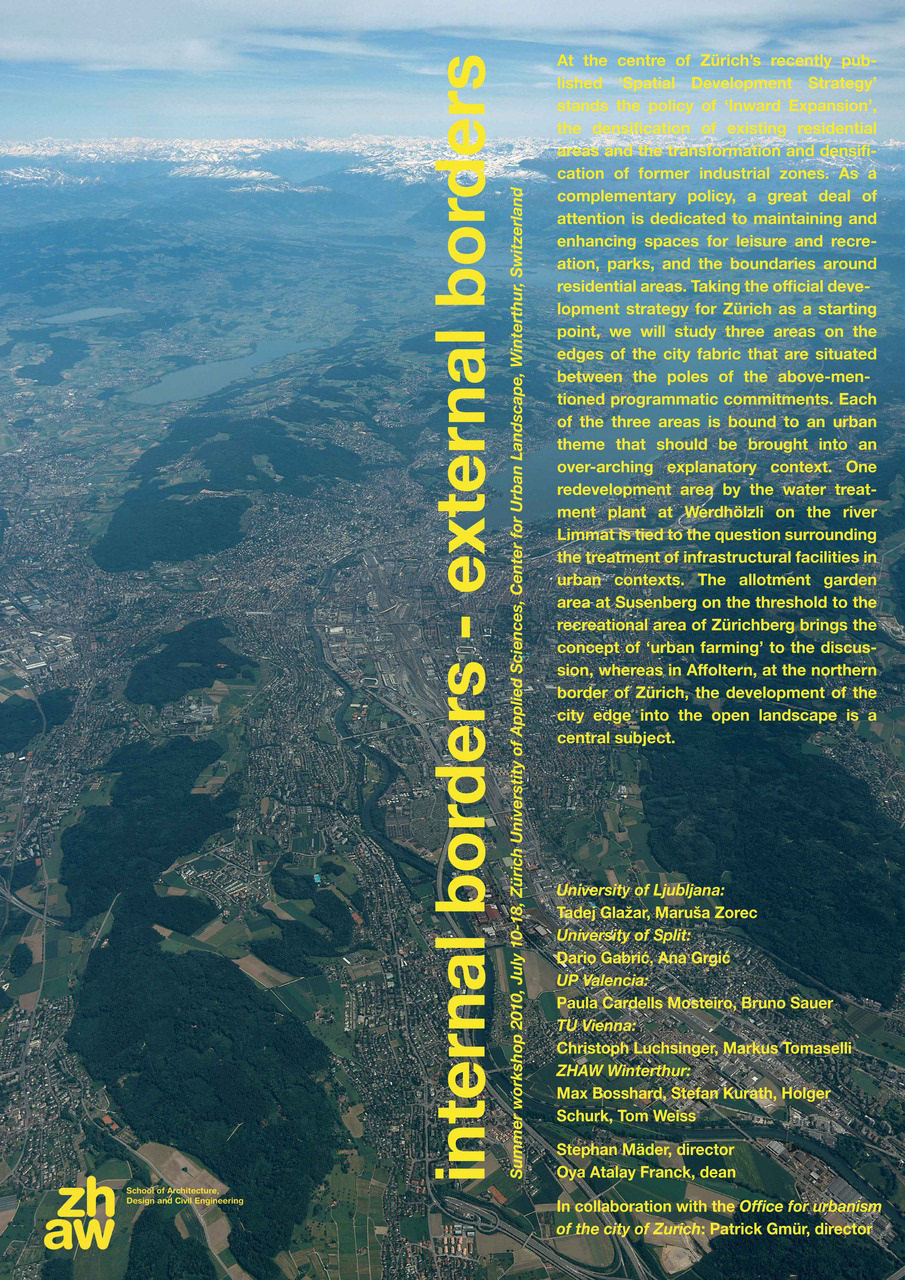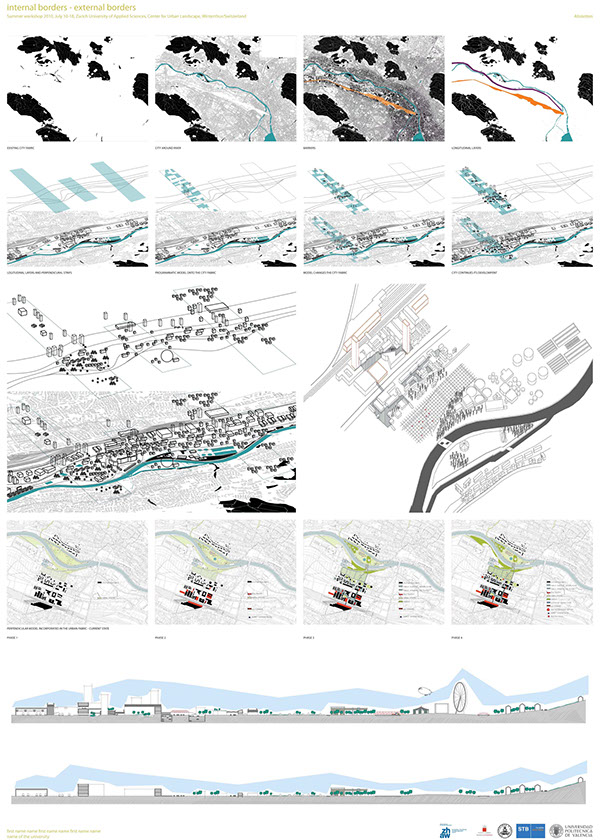Summer workshop 2010, July 10-18, Zürich Universtity of Applied Sciences, Center for Urban Landscape, Winterthur, Switzerland

SUMMER WORKSHOP, WINTERTHUR 2010
GAF SPLIT / MR + A. Krstulovic + L. Muzinic
Analysing the existing city fabric, we noticed the longitudinal spreading of the city, starting from west to east, where the river mouths the lake. Following nearly regular lines, neighbourhoods are formed transversely, from the river to the forest. However, the links that naturally exist in the longitudinal lines are absent as perpendicular connection. River is no longer a medium that forms the city, but the one that divides it in half. Rivers, railways and roads are located longitudinally and actually become obstacles to the development of urban life in the opposite direction.
Our proposition is to create a programmatic model that will cross the barrier, whatever it is: river, road or rail. It would not be a new road or urban complex, but a content that could be merged with the city and would connect the parts that do not mutually communicate. We define longitudinal strips with density, transversal ones with content and programs. Perpendicular program lies down onto the urban fabric that is already naturally full of various densities.
There are two ways to insert all the perpendicular contents past the longitudinal strips.
The first is by stressing activities and contents that already exist and intensifying them. For example, we notice the existing family gardens, we leave them as the topic, modified depending on the density of the horizontal strips to which they encounter; where the density is high, it could converte skyscrapers into green vertical towers, private homes into theme gardens, and so on. In fact, we observe how existing content affects the tissue of the city if intensified and broaden in the form of content that crosses the road, rail or river.
Another way is to force the introduction of topics in a built neighbourhood and initiate the process of density change. For example, we insert the theme of entertainment and culture in an entirely residential area. It behaves like a germ that is thrown in the city. We observe the further development of the city: some insertions will produce interesting situations, some will not. In both ways there will be a reaction.
We do not want to create architecture or any structure, but a model that could be applicable to those areas of Zürich that need to establish their identity or, in the second case, to those which have their identity, but without an adequate structure that would support and maintain it.
GAF SPLIT / MR + A. Krstulovic + L. Muzinic
Analysing the existing city fabric, we noticed the longitudinal spreading of the city, starting from west to east, where the river mouths the lake. Following nearly regular lines, neighbourhoods are formed transversely, from the river to the forest. However, the links that naturally exist in the longitudinal lines are absent as perpendicular connection. River is no longer a medium that forms the city, but the one that divides it in half. Rivers, railways and roads are located longitudinally and actually become obstacles to the development of urban life in the opposite direction.
Our proposition is to create a programmatic model that will cross the barrier, whatever it is: river, road or rail. It would not be a new road or urban complex, but a content that could be merged with the city and would connect the parts that do not mutually communicate. We define longitudinal strips with density, transversal ones with content and programs. Perpendicular program lies down onto the urban fabric that is already naturally full of various densities.
There are two ways to insert all the perpendicular contents past the longitudinal strips.
The first is by stressing activities and contents that already exist and intensifying them. For example, we notice the existing family gardens, we leave them as the topic, modified depending on the density of the horizontal strips to which they encounter; where the density is high, it could converte skyscrapers into green vertical towers, private homes into theme gardens, and so on. In fact, we observe how existing content affects the tissue of the city if intensified and broaden in the form of content that crosses the road, rail or river.
Another way is to force the introduction of topics in a built neighbourhood and initiate the process of density change. For example, we insert the theme of entertainment and culture in an entirely residential area. It behaves like a germ that is thrown in the city. We observe the further development of the city: some insertions will produce interesting situations, some will not. In both ways there will be a reaction.
We do not want to create architecture or any structure, but a model that could be applicable to those areas of Zürich that need to establish their identity or, in the second case, to those which have their identity, but without an adequate structure that would support and maintain it.

